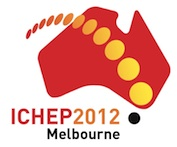Speaker
Dr
Romulus Godang
(University of South Alabama (US))
Description
The flavor-changing neutral-current decays decays D0 --> e+e-, D0 --> mu+mu-, and D0-->gamma gamma are highly suppressed in the standard model, well below observable levels. The decay D0 --> e+mu- is further lepton-flavor violating, and thus can occur only through very slow neutrino mixing. Thus, these decays constitute sensitive probes for possible new-physics contributions. We report new limits on the branching fractions of these decays. The electron and di-photon channels, in particular, benefit greatly from the high photon efficiency and clean environment of the B factory.
Charm decays that are very rare or forbidden within the standard model constitute a sensitive search for new physics. We report results of searches for 35 such decays of the D+, D0, D_s , and Lambda_c into final states containing two leptons plus a pion, kaon, or proton. This includes final states involving lepton-number or lepton-flavor violation. We obtain branching-fraction limits of order 10^-6. Most of these are the tightest limits to date, in some cases they are the only results published so far, and some cut into the allowed parameter spaces of published new-physics models.
Precision properties of charm mesons help test and provide reference points for many of the tools and approximations used in hadronic calculations, such as lattice QCD computation of hadronic matrix elements. We present a new measurement of the natural line width of the D*+ meson and of the difference between the masses of the D*+ and the D0 mesons. Using the full BABAR dataset, we reconstruct the decays D*+ --> D0 pi+, with the D0 identified in its decays into K-pi+, K-pi+pi-pi+, K-pi+pi0, and Ks pi+pi-.We extract the D*+ width and the pole position in the mass difference Delta m in each sample by fitting the measured $\Delta m$ distribution to the sum of background and signal, modeled as a relativistic P-wave Breit-Wigner line shape convolved with a resolution function. Our results are several times more precise than the previous world average.
We report results of measurements of the angular-momentum-excited charmed baryon Lambda_c(2880)+ decaying to Lambda_c+ pi+ pi- using approximatly 316 fb^{-1} of BaBar e+e- collision data. We reconstruct the Lambda_c+ candidates in the decay mode pKpi and measure the Lambda_c(2880)+ mass, width, and production cross section, and study resonances in the Lambda_c+ pi+ pi- final state. We report the first measurements of the relative branching fractions for decays of the Lambda_c(2880)+ into the final states Sigma_c^0(2455) pi+ , Sigma_c^++(2455) pi- , Sigma_c^++(2520) pi- , Sigma_c^0(2520) pi+, and the non-resonant Lambda_c+ pi+ pi- contribution.
Primary author
Dr
Romulus Godang
(University of South Alabama (US))




